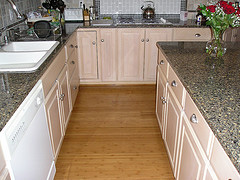
Another environmentally sound choice for flooring is bamboo.
Bamboo is manufactured from processed strips of cane and
compressed to be as hard and durable as a regular hardwood
floor. Some bamboo is supplied in North America if the
environmental impact of transportation is a concern.
Considerations:
- Bamboo floors that are less expensive may not have the
highest quality UV protective finish as other floors.
- Radiant flooring can be used under bamboo flooring.
- Bamboo is technically a grass and not a hardwood tree.
Don’t let this discourage you from purchasing because the
manufacturing techniques make bamboo a strong, hard, durable
and dimensionally stable surface.
- To give you an idea of the strength of bamboo, it has been
rated to be almost as hard as red oak to slightly harder than
red oak. The darker bamboo floors are reported to be softer
than the lighter shades because of the heating process that
darkens the color.
- The dimensional change with moisture content is also
significantly less than that for most common hardwoods.
- Nearly all bamboo flooring sold in North America is
produced in the southern Chinese province of Hunan, in an area
known as “the bamboo sea” for its extensive bamboo forests.
- If possible to obtain the information, find out if the
manufacturer of the bamboo flooring you are interested in
allows the bamboo to reach full maturity. According to
buildinggreen.com the shoots reach full size in one to two
years, but it takes a third year for them to mature to the
point where they are no longer feeding the plant. If the shoots
are cut before that time, the plant suffers, while after the
third year the shoot becomes “dead weight,” and the plant
benefits from its removal.
- Contrary to the concerns of some, the harvesting in these
forests is not a threat to Pandas, as they live at much higher
elevations and eat a different species of bamboo.
Good for the environment:
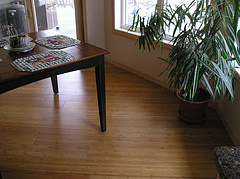
- Bamboo matures in three years
- It regenerates without need for replanting
- It also requires minimal fertilization or pesticides
- There currently is no FSC certified bamboo so it is
important to see what you can confirm about the bamboo you are
interested in purchasing.
Options:
- Finish options include a Klumpp coating that comes with a
longer warranty because of the quality of the ingredients.
- Klumpp coatings wear extremely well and are certified to be
free from toxic substances.
- Bamboo floors are available with the following installation
techniques: glue, nail, staple or floating in pre-finished or
unfinished.
- The installation process is the same as the process to
install hardwood flooring.
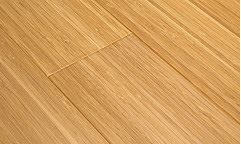
Design Options:
- Bamboo is offered in planks, tiles as well as handscraped.
- The handscraped products have limited availability.
- The grain of bamboo is either horizontal or vertical.
Vertical graining is a thinner, more linear look while
horizontal graining is wider showing the knuckles of the
bamboo.
- With horizontal, the pieces are arranged and laminated side
by side flatways. With the vertical type the slats are stood
upright on edge and then laminated.
- The first colors that were introduced were carbonized and
non-carbonized. The result were a natural, amber, brownish
color as well as a yellow based color. The brownish amber color
is achieved by pressure steaming the bamboo, which creates a
darker color through carbonization.
- More recently, colors ranging from rich reds to mochas and
blacks are available.
-
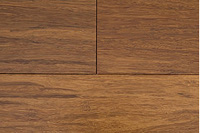
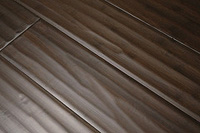
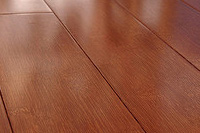
Maintenance
- Like hardwood flooring, bamboo floors need to be swept
or vacuumed (without a beater bar) regularly to keep dust
and dirt away. Dust and dirt can scratch the finish of the
floor.
- Mats should be placed at every entrance to keep the
dirt from entering your home.
- Spills should be cleaned up immediately. Spills that
sit too long can penetrate the floor and permanently stain
the floor.
To avoid invalidating your warranty, be sure to check to
see if a specific cleaner needs to be used. These cleaners
can be recommended from the manufacturer.
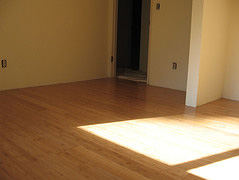
- Rugs that are non rubber backed should be used to avoid
discolorations on the floor.
- Chair and furniture protectors should be used to
protect the floors. Fabric or felt types are recommended.
Casters should be removed and replaced with felt floor
protectors when possible.
- Because sunlight can fade bamboo floors, furniture and
rugs should be rotated periodically. Rotating the furniture
and rugs will produce a more even color. Use of window
coverings also helps protect floors from sunlight.
- High heeled shoes can permanently damage bamboo with
dents.
- Like the damage high heels can do, dragging heavy
furniture or other items can permanently damage bamboo
floors.






